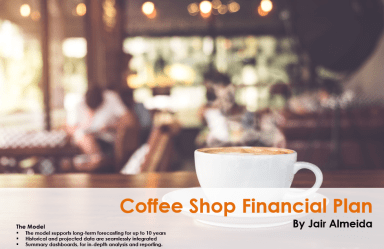
Last version published: 11/03/2024 08:31
Publication number: ELQ-36926-3
View all versions & Certificate

Coffee Shop Financial Plan and Budget Control
A 10-year financial model for coffee shops, with monthly 3-statement projections, key metrics, DCF valuation, and visual charts for performance analysis.
Further information
The model's objective is to provide a comprehensive 10-year financial forecast for coffee shops, including detailed monthly and annual projections for income, cash flows, and balance sheets. It facilitates strategic decision-making by analyzing breakeven points, visualizing key performance metrics, and assessing valuation through discounted cash flow analysis.















